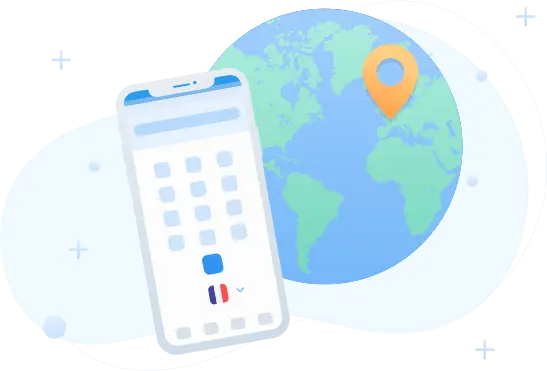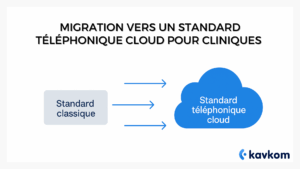In today’s interconnected world, the ability to communicate effectively abroad is essential, especially for overseas territories such as Wallis and Futuna, New Caledonia and French Polynesia. These territorial collectivities of the French Republic, scattered across theIndian and Pacific Oceans, have a special status and, consequently, unique telephone codes that distinguish them within the French telephone network. The importance of these codes goes beyond simple mobile telephony; they are crucial for maintaining professional and personal relationships across geographical areas.
The aim of this article is to demystify the DOM-TOM dialing system, providing a clear understanding of how it works within the global numbering plan. Whether you’re a professional looking to optimize your business communications with advanced feature-rich cloud telephony solutions like those offered by Kavkom, or simply an individual looking to stay connected with loved ones in these regions, this article is designed for you.
Find out how these special numbers facilitate borderless communication, while respecting the official geographic code and the new numbering plan set up by France Telecom and Orange customer service.
Understanding French overseas departments and territories codes
History and development
The telephone code system for French overseas departments and territories, governed by the French numbering plan, has undergone several major changes over the years.
Initially, the French telephone network integrated these overseas territories via specific codes, reflecting their special status within metropolitan France. The latest changes were dictated by technological needs, the evolution of mobile telephony, and the desire to simplify communication in an increasingly connected France, including its remote departments and territories.
The reform of the numbering plan in mainland France and its overseas territories, which began in the 1990s, aimed to unify the numbering system across the country and its overseas territories.
This new plan introduced a ten-digit national number format, which includes a specific area code for each region, including remote territorial authorities such as New Caledonia, French Polynesia and Saint-Pierre-et-Miquelon.
Indicator differentiation
Each DOM-TOM territory is assigned a unique country code or international dialling code , which distinguishes it not only in the context of the French telephone network, but also in the context of global telephony. For example, Wallis and Futuna are represented by the code +681, while Reunion and Mayotte use +262. These codes play a crucial role in foreign telephone numbers, enabling smooth, direct communication with these geographical areas.
How to use the DOM-TOM codes?
Whether in a professional or personal context, theproper use of French overseas departments and territories codes can greatly facilitate communication and optimize information exchange processes. Whether you’re a call center manager in Paris looking to improve the efficiency of your operations, or a clinic manager in Lyon wanting to offer easier access to your healthcare services, understanding how to dial and use these codes is crucial.
| DOM-TOM | INDICATIVE | Phone number format |
| GUADELOUPE | 05 90 | + The 6 digits of the subscriber |
| GUYANE | 05 94 | + The 6 digits of the subscriber |
| MARTINIQUE | 05 96 | + The 6 digits of the subscriber |
| MAYOTTE | 02 69 | + The 6 digits of the subscriber |
| NEW CALEDONIA | 06 87 | + The 6 digits of the subscriber |
| FRENCH POLYNESIA | 06 89 | + The 6 digits of the subscriber |
| RÉUNION | 02 62 | + The 6 digits of the subscriber |
| ST PIERRE ET MIQUELON | 05 08 | + The 6 digits of the subscriber |
| WALLIS & FUTUNA | 06 81 | + The 6 digits of the subscriber |
For Professionals
Integrated telephony solutions, such as those offered by Kavkom, play an essential role in optimizing business communication, especially for professionals with links to French overseas departments and territories. By using the international telephone number format, these solutions make it possible to seamlessly integrate DOM-TOM dialing codes into CRM systems, offering a smooth, uninterrupted communications experience, whether for telecommuting, managing inbound calls or tracking customer interactions across different geographical zones.
Practical examples, such as setting up an efficient customer service for a company with a customer base on Reunion Island and Mayotte, or using virtual numbers to establish a local presence in New Caledonia without the need for a physical Internet box on site, illustrate perfectly how professionals can take advantage of overseas France codes.
For individual customers
Individuals can also benefit from an in-depth understanding of DOM-TOM area codes, especially when it comes to registering or modifying contacts in international format in their landline or cell phone.
Numbering plan change and its impact
The revision of the numbering plan in the French overseas departments and territories (DOM-TOM), a crucial element in the modernization of the French telecommunications system, has had significant repercussions for both local users and those in mainland France and beyond. The change was aimed at harmonizing the numbering system across the French Republic, ensuring better integration of the French telephone networks and greater efficiency in call handling.
Our analysis of the change of plan
The transition to a new numbering plan, implementing a new uniform ten-digit telephone numbering system, was a major step towards unifying telecoms services throughout the country, including the overseas territories.
This transition has not only facilitated the management of high call volumes, but also enabled better allocation of network resources, optimizing the quality of mobile and fixed-line telephony services.
For companies and telephone operators such as France Télécom and Orange, this change has required substantial upgrades to infrastructures and call management systems, ensuring that all telephone numbers, including those in French overseas departments and territories, comply with the new numbering plan. It also involved considerable efforts to inform and educate customers on how to use the new numbering format, particularly for international calls.
Innovative Section : Integrating Indicators into Technological Solutions
The constant evolution of telecoms technology is opening up new avenues for the integration of DOM-TOM area codes into cutting-edge solutions. These innovations not only simplify but also enrich interactions across the oceans, marking a significant step forward in the way we connect with these far-flung territories.
The future of telecoms with DOM-TOM area codes
Integrating DOM-TOM callsigns into CRM systems, cloud telephony solutions, and other technology platforms represents a major step forward.
For example, the application of Click to Cal functionality enables companies to make calls directly through their CRM interface using stored telephone numbers, including those in French overseas departments and territories, improving the efficiency and productivity of sales and support teams.
The use of VoIP (Voice over Internet Protocol) technology by telephone operators to offer telephony services via the Internet, including Internet boxes and mobile applications, is revolutionizing the way we interact with overseas regions. This approach not only reduces call costs, but also facilitates global connectivity, making geographical distances almost insignificant.
Kavkom and French overseas departments and territories codes
As a provider of innovative telephony solutions, Kavkom takes full advantage of these technological advances to improve communication with the French overseas departments and territories. By integrating callsigns into their solutions, Kavkom enables companies in various sectors, such as call centers, medical clinics and technology startups, to maintain fluid, uninterrupted communication with these territories.
In the various sections of this article, we’ve explored the crucial importance of DOM-TOM area codes in modern communication, touched on the historical evolution of the numbering plan, and examined how these special numbers fit into today’s technological advances. The aim was to provide a comprehensive and practical understanding of the use of codes for different audiences, ranging from professionals in a variety of sectors to private individuals seeking to maintain contact with these remote regions.
The revision of the numbering plan and the introduction of new communication technologies underline the company’s ongoing commitment to facilitating seamless and efficient connections with French overseas departments and territories. The solutions offered by Kavkom, in particular, demonstrate the positive impact of these innovations on business productivity and the quality of personal interactions, ensuring that distance is no longer an obstacle to successful communication.
In conclusion, it’s essential to recognize the importance of understanding and using DOM-TOM area codes to maximize the benefits of these communication tools. Whether for professional or personal reasons, an enlightened and adapted approach can greatly improve the way we communicate across these unique territories from France or abroad…





